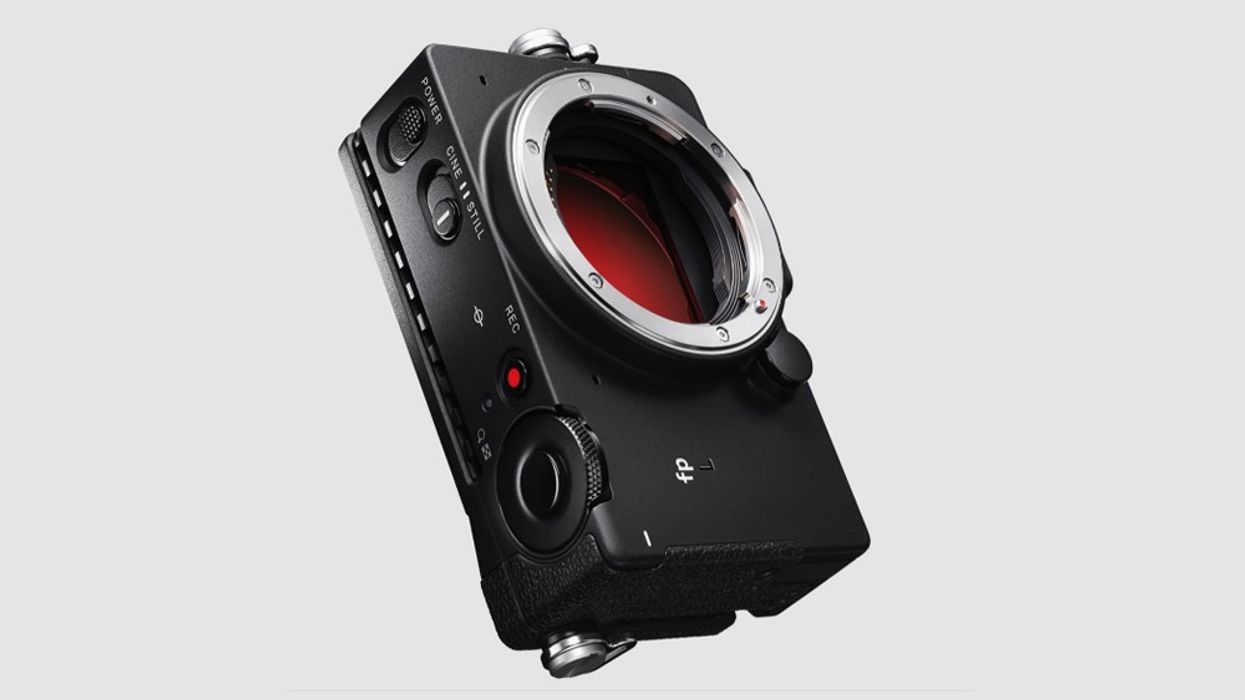The Sigma fp L Is a Camera That Should Influence the Market
Sigma has announced the new fp L with features a filmmaker could want at a reasonable price.

With the original Sigma fp, we were seemingly getting everything we could possibly want, the best of all features from other camera makers. Shooting to an external SSD like a Blackmagic Pocket. A full-frame sensor like the Sony Alpha's and Panasonic S lineup. RAW straight to SSD, though initially only CinemaDNG, and then eventually both ProRes RAW and Blackmagic RAW to external recorders. A director's viewfinder mode that previews the framing size of various other manufacturers' sensors.
Despite all this, though, it wasn't the hit we thought it might be. It's popular, and everyone we know with one is happy with it, but it hasn't had nearly the impact of the Sony Alpha or Canon EOS R cameras. Maybe the lack of IBIS and a strong AF is truly holding it back.

The key here is that, to my mind, Sigma is doing all the things we want a camera manufacturer to do as a filmmaker.
First and foremost, they are joined together with Panasonic and Leica in pushing the open "L-mount," and they are encouraging others to do the same. While Sony can be forgiven for going for the E-mount since they were so far ahead of everyone else, for newer full-frame cameras, as a filmmaker I always support open standards, and the L-mount is the "open" standard.

Open-format lens mounts are good for filmmakers, but less so for manufacturers. As a filmmaker, you can invest in a really good set of lenses and know that, even as camera tech evolves, you can keep evolving your camera body without upgrading all of your lenses. The dream of L-mount is something like that for full-frame mirrorless.
Fall in love with the Sigma fp L and buy a bunch of lenses. A few years later a new Panasonic S series comes out with a feature you want; you only need a new body, not new glass. This is one of the main reasons I'm really deferential toward cameras that support L-mount, and I hope that Blackmagic will support L-mount in a future release. It's also super easy to adapt to older EF and PL lenses.
Continuing that theory of flexibility, the fp is the first major platform to support both ProRes RAW and Blackmagic RAW. Why does that matter?
Because as a shooter you don't always dictate post. You might get hired by some folks who cut Resolve, and others who cut Final Cut Pro. The ability to deliver RAW that works natively on either platform is a useful skill. If we can wrangle it, we'll try to use the fp L to shoot a comparison between the two raw formats and see if either offers an appreciable latitude or flexibility difference.

The one disappointment is that the camera still only supports SD cards and not CFexpress cards. The extra speed of CFexpress is how Sony does 8K recording on the Alpha 1, for instance.
The weirdest, but most wonderful feature is the creation of QR codes that allow you to save the settings of the camera to load into the camera later or share with other creators. While the press materials talk about this as a fun way to create a custom camera setup and share it on social media, for video shooters this has an entirely different purpose—multicam. It's a long habit at the beginning of any multicam day to triple-check that all of the cameras are set up precisely the same way.
Nothing is more frustrating than getting into post and realizing three cameras were 23.98fps and one was true 24p, or some other mismatch. So, you check first thing. With the QR code, this gets faster. Set up your QR code in the camera prep, then show it to every Sigma fp L you are shooting with that day, and bam, cameras match. I'd still check the settings, to be thorough, but if you have a complicated camera setup, you don't need to worry about the time copying the settings over.

The fp L still lacks IBIS, Log shooting, and other codec support like an internal 10-bit 4:2:2 outside of CinemaDNG RAW.
But will the combination of a dynamite price point, improved autofocus, and resolution make the fp L a hit? Let us know your thoughts in the comments below.












